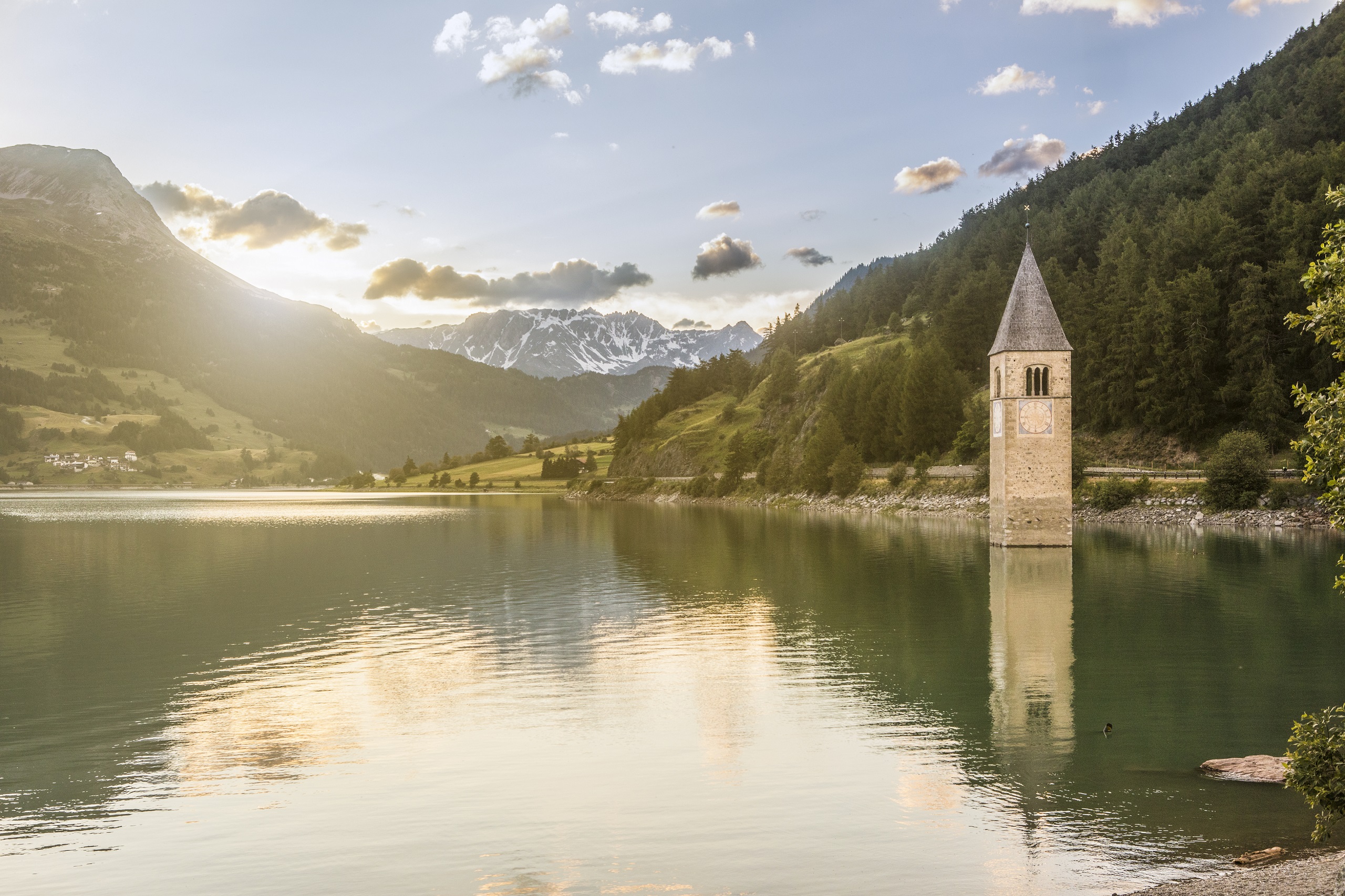Under water
South Tyrol generates twice as much power as it consumes. Water is the primary source of energy. A village was even sacrificed for it!
Graun/Curon was demolished and flooded and its inhabitants moved out. That was 60 years ago now. Since then, people have been living with a lake on their doorstep which they regard as an alien body of water. The portrait of a village which has not yet completely overcome its curious past.
When Theresia Theiner tells the story of Sultan, her eyes glaze over even now, half a century later. Sultan, a St. Bernard dog, was the family dog of the old village. Like many dogs, Sultan also had his favourite spot where he could watch people go about their business from a safe distance. He was a regular fixture under the kitchen table at the Gasthaus Traube Post inn. Theresia Theiner’s parents ran the hotel and it was situated at the heart of the small village of Graun im Vinschgau/Curon Venosta. And just like the other buildings in the village, it too was blown up in 1950. Theresia, her three sisters and her parents were relocated. And Sultan was left not understanding why the kitchen table had suddenly disappeared. “He stood on the ruins of our house and looked for the table,” Theresia Theiner said. “And then, when everything was flooded, he kept swimming back out and we had to take him away by boat”.
The dog did not ever find a spot as good as under the kitchen table in his new home. He even refused to go up the steps to his new house. Nobody in Graun, not the people or animals, ever got to grips with the loss. “Some of the most elderly died of sorrow,” says Theresia Theiner.

